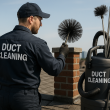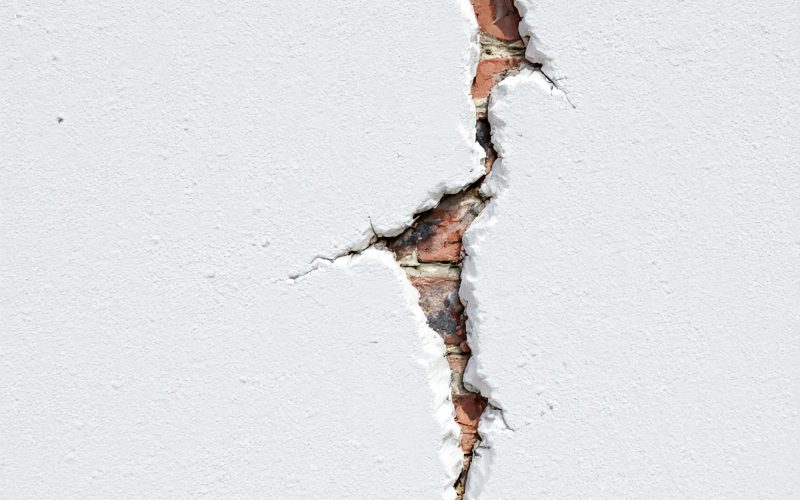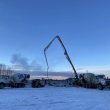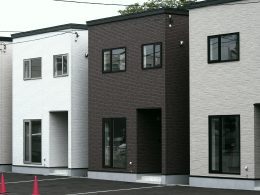Cracking is one of the most common issues affecting concrete structures. There are several different types of cracks, like shrinkage cracks, plastic cracks, thermal cracks, and structural cracks, to name a few.
Concrete cracks are as bad as they sound. They can compromise the structural integrity of the concrete. However, if you face such a problem, don’t worry, all is not lost. We have put together this blog so you can better understand concrete cracking and get affordable concrete services to prevent or repair concrete cracks.
Understanding Concrete Cracking
Concrete cracking is exactly what it sounds like, cracks in concrete. It rarely occurs because of a single thing, as multiple factors can come into play. These could be environmental, chemical, or physical, affecting the core of concrete and weakening the structure. Below, we will talk about the different causes of concrete cracking.
Causes of Concrete Cracking
All of the following issues are treatable and preventable through quality services. You can search for concrete solutions near me and compare different options to finalize one.
-
Rapid Evaporation
The rapid evaporation of surface water can cause the surface to shrink faster when concrete is still in the plastic phase. It is mostly due to varying weather conditions or other environmental effects, and happens in early stages. The shrinkage causes stress stronger than the strength of the concrete, which eventually results in cracks.
-
Movement Hurdles
As concrete hardens with time, it shrinks and takes a form. However, if there are any restrictions in the way of reinforcing steel, other concrete elements, or a subgrade, the drying process is disturbed. It will form cracks that are deeper and more uniform than plastic shrinkage.
-
Temperature Fluctuations
Extreme temperature fluctuations are very harmful to concrete. The freeze-thaw cycles can cause thermal contraction while extreme hot temperatures can cause thermal expansion. Both of them cause significant stress, which can lead to cracking.
-
Structural Overloading
Every concrete structure has a maximum limit of pressure it can bear. If loads exceed the capacity, the concrete structure can start to experience cracks. This type of cracking is called structural cracking and often follows a pattern related to stress.
-
Unbalanced Settlement
An out-of-place or uneven settlement of the soil or subgrade can induce a lot of stress in the concrete structure it is holding. This anomaly is common in areas with unstable soil or not enough soil compaction, and can easily lead to cracking.
-
Chemical Effects
Certain chemicals within the mix, outer surface, or in the environment can heavily affect the concrete structure. Some prime examples include alkali-silica reactions and sulfate attacks. It can lead to expansion and cracking.
-
Steel Corrosion
The water moisture and oxygen can penetrate the concrete structures and reach the steel structure, resulting in corrosion. It can create internal pressure which can lead to cracking the surrounding concrete.
-
Construction Problems
Any mistakes, mishandling, or mishaps during concrete mixing, pouring, placing, consolidating, and finishing can cause concrete cracking. Other than this, improper water-cement ratio is also a major mistake as well as premature removal of formwork.
How To Prevent Cracks in Concrete Structures?
The best way to avoid concrete cracking is to prevent it from happening in the first place. Here are the best techniques to prevent cracking in concrete structures.
-
Proper Design Mix
A properly designed concrete mix with the right amount of cement, water, aggregates, and admixtures is important to avoid cracking. The correct ratio will reduce shrinkage and maintain placement. For specialized applications like concrete for countertops or decorative concrete floors, specific mix designs and admixtures work well.
-
Stable Subgrade
An appropriately compacted subgrade is important to prevent settlement. For projects like sidewalk installation in Alaska or foundation fitting that needs concrete footing installation, subgrade preparation is essential. Also, a proper drainage system is non-negotiable, especially in conditions encountered during remote concrete pours Alaska.
-
Adequate Reinforcement
Properly reinforcing steel that is being embedded in concrete should be of adequate amount, size, and placement to provide the necessary strength and control cracking. For structures like a poured concrete retaining wall, concrete wall hangers, or concrete block wall hangers, you need proper steel reinforcement.
-
Proper Jointing
Properly built and placed joints ensure there is enough place for shrinkage and thermal movements. Control joints help control cracks which minimize random cracking, while expansion joints create a physical separation or gap between concrete elements which allows them to move freely. For structures like a concrete floor shop, monolithic concrete slab, polished concrete shop floor, or a commercial patio contractors Alaska project, careful joint implementation is paramount.
-
Essential Curing
Curing is the essential process of ensuring that enough moisture content and temperature are maintained for early concrete hardening. Proper curing allows cement to hydrate properly, which leads to a stronger and more durable structure without cracks. This is greatly beneficial in places where environmental situations differ, like during remote concrete pours Alaska.
-
Careful Pouring
Using proper techniques to pour concrete is vital to eliminate voids and ensure a good bond with the insides. Most commonly, vibration technique is used to set the concrete but you must be careful as to not induce too much or too little vibrations.
-
Protection From Harm
This includes protecting concrete structures from harmful external conditions. These include extreme temperatures, wind, and direct sunlight to prevent unnecessary issues, like moisture loss or thermal shock.
How To Repair Existing Cracks in Concrete Structures?
Sometimes, even with the essential protective measures, cracks inevitably appear and weaken the structure. At this point, it is necessary to call reliable and affordable concrete services to repair the damage. The different strategies they might use include the following.
-
Assessment
The first step to everything is inspection and assessment. The professional will figure out the damage (cracks) and their size, pattern, and location. This will help diagnose the issue and the right repair approach.
-
Repair Service
The approach to appropriate repair depends on the crack itself as well as the structure of the concrete. Some of the most commonly used concrete repair methods are as follows:
-
Sealing
For cracks that are non-structural and less than ¼ inch wide, sealing is the best course. It can keep out the water and other harmful elements, and prevent them from causing further damage. If you are searching for driveway repairs near me or concrete driveways contractors, remember to go for a durable and weather-resistant sealant.
-
Filling
Wider and non-structural cracks can be fixed via cementitious grout, epoxy injection, or polyurethane foam. These are effective in restoring structural integrity in structures like a poured concrete retaining wall or a foundation.
-
Repair
Surface: For cracks or damage on the surface, certain patching compounds or concrete floor resurfacing techniques prove to be adequate. For appealing purposes, decorative concrete floors might require specialized repair techniques which you can consult with your professional contractor.
Structural: As opposed to surface damage, structural cracks require more robust techniques. It may require reinforcement, epoxy injection, fiber-reinforced polymers, or the addition of supplemental reinforcement.
-
Overlays
For large surface damage or cracking, a concrete overlay can be used over the existing concrete. This is common for concrete floor resurfacing and creating decorative concrete floors.
-
Grouting
For deep settlement-related cracking, pressure grouting is effective as it can stabilize the underlying soil and fill gaps.
Finding the Right Affordable Concrete Services For Quality Work and Quick Repairs
If you are searching for solutions like concrete services in Anchorage or concrete solutions near me, there are professional, affordable concrete services providers available. For things like sonotube installation (including heavy-duty sonotubes), concrete footing installation, or tackling challenges like remote concrete pours Alaska, finding knowledgeable contractors is crucial.
For projects requiring commercial patio contractors Alaska or larger projects like a concrete floor shop or polished concrete shop floor finishes, make sure your contractor has the right skills and experience. Even for something as simple as sidewalk installation in Alaska or driveway repairs near me, the right provider is key.
They will consult accordingly and help get things done quickly and effectively, even if you have unique requirements like concrete countertop solutions or concrete for countertops.
Conclusion
Concrete cracking is common and can not only affect the structural integrity but also weaken the appearance of the concrete structures. Understanding the various causes of cracking is important to mend the damage and prevent it from getting worse.
We hope today’s blog will have cleared things out a lot. We discussed the appropriate repair strategies when cracks appear, which are important to maximize the lifespan and strength of concrete.
Whether you want to repair a monolithic concrete slab, floor concrete repair, or install concrete footings, all you have to do is find a reliable concrete provider for affordable concrete services. They will help you select the right material and construction techniques, and ensure timely maintenance for the most bang for your buck.












